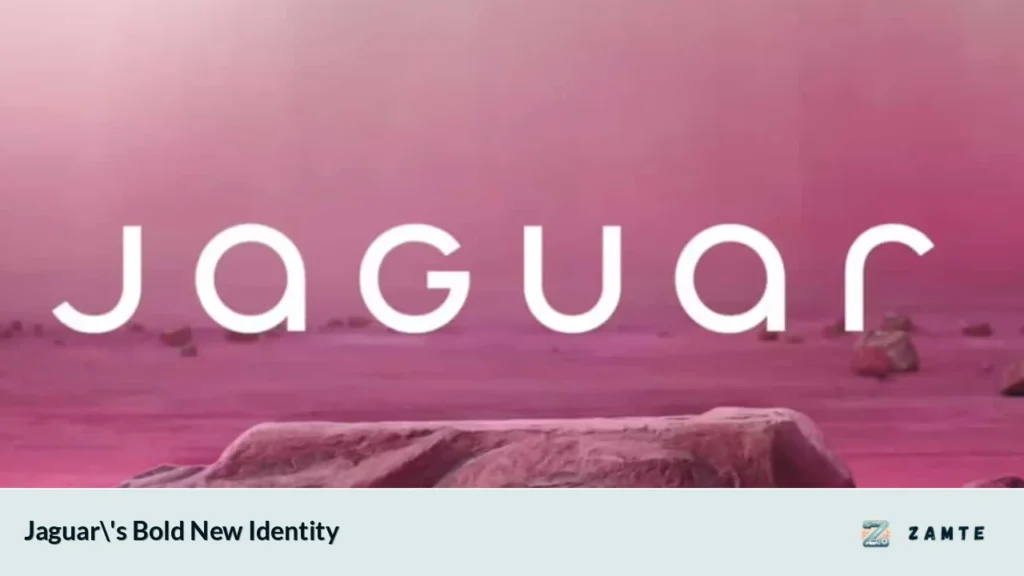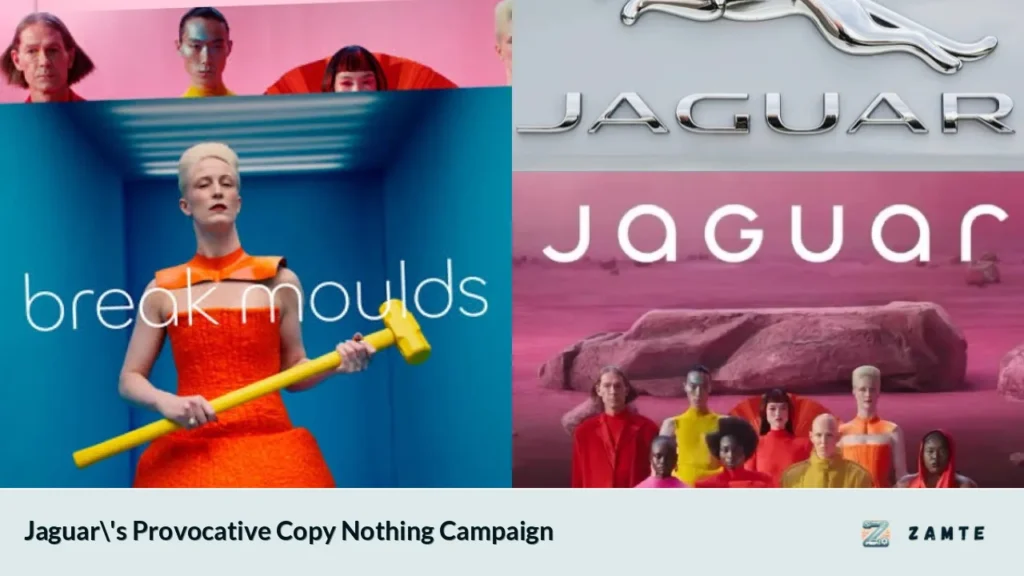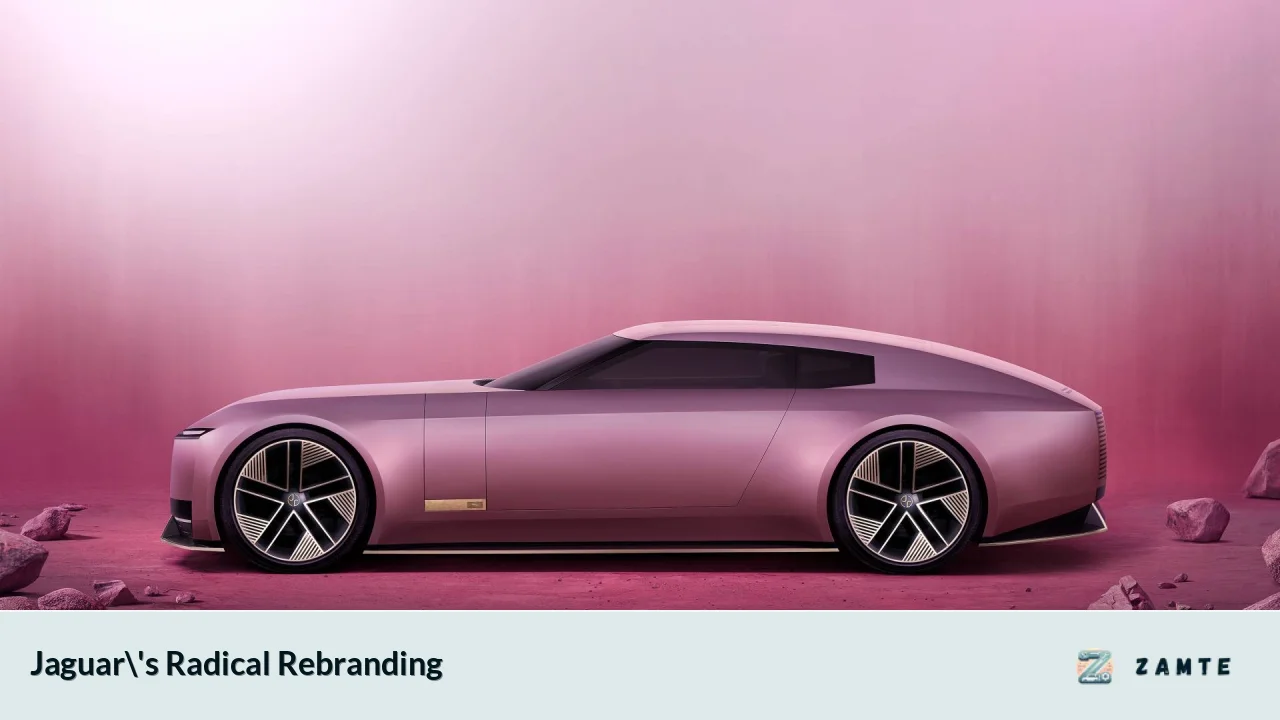In a move that has sent shockwaves through the automotive industry, Jaguar, the iconic British luxury car manufacturer, unveiled a radical rebranding strategy on November 19, 2024. This dramatic shift in the company's image and direction has sparked intense debate among industry experts, consumers, and even politicians. As Jaguar prepares to transition into an all-electric brand by 2026, the company's new approach has been met with both praise for its audacity and criticism for its departure from tradition.
| Key Points of Jaguar's Rebranding | Details |
|---|---|
| New Logo | Redesigned "leaper" cat and stylized "JaGUar" typography |
| Brand Values | Exuberant, modernist, and compelling |
| Target Market | Younger, wealthier, urban, design-minded consumers |
| Product Strategy | All-electric lineup by 2026, starting with a four-door GT |
| Pricing Strategy | Approximately double current prices, competing with ultra-luxury brands |
The Unveiling of a New Jaguar

On November 19, 2024, Jaguar revealed its new logo and brand identity at its headquarters in Gaydon, England. The unveiling marked the beginning of what the company calls "the biggest change in its 102-year history". The new branding features a redesigned "leaper" cat emblem, a stylized "JaGUar" typography, and a bold new color palette that includes electric pink, red, and yellow[1].
Jaguar's Managing Director, Rawdon Glover, explained that the decision to pause new car sales was "deliberate," aiming to create a clear distinction between the legacy models and the upcoming electric offerings[4]. This strategic move underscores the magnitude of the transformation Jaguar is undertaking.
The rebranding is not just a cosmetic change but a fundamental shift in Jaguar's market positioning. The company aims to reposition itself as an exclusive, high-priced luxury EV brand that competes in the league of Rolls-Royce and Bentley[2]. This ambitious goal reflects Jaguar's confidence in its ability to deliver cutting-edge electric vehicles that can command premium prices.
The New Face of Jaguar
The new Jaguar logo and brand identity are designed to embody the company's new ethos of "exuberant modernism"[2]. The redesigned "leaper" cat emblem, a hallmark of Jaguar's identity, now features a more angular and stylized appearance. This modern interpretation of the classic symbol aims to bridge Jaguar's storied heritage with its future-focused vision.
"We must alter people's views on what Jaguar represents," stated Rawdon Glover. "This is not a simple task, so establishing a clear divide between the old and new is indeed beneficial."[4]
The typography of the Jaguar name has also undergone a significant transformation. The new "JaGUar" logo combines uppercase and lowercase letters, creating a unique and memorable visual identity. This unconventional approach to the brand name is intended to catch the eye and signal that this is not the Jaguar of old.
A Controversial Marketing Campaign

Following the logo reveal, Jaguar released a teaser video on November 25, 2024, as part of its "Copy Nothing" campaign. The 30-second clip featured models in vibrant, flamboyant attire revealing the new logo, but notably absent were any cars, suave gentlemen in suits, or big cats – elements traditionally associated with Jaguar's brand image[3].
The video quickly became a subject of intense debate and criticism across social media platforms and automotive forums. Many observers expressed confusion and disappointment at the lack of actual vehicles in the advertisement. Some critics went as far as to warn that this approach could "cost jobs and cause real damage," with sentiments like "Go woke, go broke" circulating in the discourse[3].
"I have no clue what this is about, but it's brilliant. Everyone is talking about Jaguar at a time when they aren't even manufacturing cars," remarked Martin Brundle, a former Formula 1 driver turned broadcaster[3].
The controversy reached new heights when high-profile figures weighed in on the debate. Elon Musk, owner of Tesla, responded on X (formerly Twitter) with the question, "Do you sell cars?"[3] This pointed query from a competitor in the electric vehicle space highlighted the unconventional nature of Jaguar's approach.
Jaguar's Response to Criticism
In the face of mounting criticism, Jaguar has stood firm in its new direction. The company has been actively engaging with critics on social media, responding to posts with phrases like "To live is to evolve"[3]. This stance indicates that Jaguar anticipated and perhaps even welcomed the controversy as part of its strategy to generate buzz and discussion around the brand.
A Jaguar spokesperson explained to the BBC, "We had to break the mold and do something that would make us stand out," confirming that the controversy is all part of their strategy[3]. This approach aligns with Jaguar's new brand values of being "exuberant, modernist, and compelling," and not being "afraid to polarize"[2].
The Strategic Shift: From Premium to Ultra-Luxury
Jaguar's rebranding is more than just a visual overhaul; it represents a fundamental shift in the company's market positioning and product strategy. The automaker is aiming to move upmarket, targeting a more exclusive and affluent customer base.
New Target Market
Jaguar is now targeting younger, wealthier, and more urban shoppers, described by the company as "design-minded" and "cash rich, time poor"[2]. This shift in focus is a deliberate move away from the brand's traditional customer base, which has been aging and predominantly male.
Erin Baker, editorial director at AutoTrader, observes that the automaker is attempting to shed its "stuffy" reputation, which has been associated with an older, predominantly white male demographic that frequents golf clubs and sports cravats[3]. This repositioning is crucial for Jaguar's future, as Baker notes, "Sales have been stagnating for years. A fundamental change is necessary for the brand."
Product Strategy
At the heart of Jaguar's transformation is its commitment to becoming an all-electric brand by 2026[4]. The company plans to launch three new electric models, with the first being a four-door GT to be produced in Solihull, West Midlands[4].
Jaguar is targeting an EPA-rated range of up to 430 miles for its new electric vehicles, with the ability to add 200 miles of range in 15 minutes when connected to a Level 3 fast-charger[2]. This ambitious performance target puts Jaguar in direct competition with leading electric vehicle manufacturers.
Pricing Strategy
In line with its move upmarket, Jaguar has announced that the prices of its new electric vehicles will be approximately double those of its existing cars[2]. This significant price increase positions Jaguar in the ultra-luxury segment, competing with brands like Bentley and Rolls-Royce.
The higher prices mean that Jaguar only expects to retain 10 to 15 percent of its current customer base[2]. This dramatic shift in pricing strategy represents a significant gamble for the brand, as it risks alienating its existing customers in pursuit of a more exclusive market segment.
Industry Reactions and Expert Opinions
The automotive industry has been abuzz with reactions to Jaguar's bold move. Industry experts and analysts have offered a range of perspectives on the potential success or failure of this radical rebranding.
Positive Outlooks
Some industry observers see Jaguar's rebranding as a necessary and potentially transformative move. Martin Brundle's comment about everyone talking about Jaguar highlights the success of the campaign in generating buzz and attention for the brand[3].
"Jaguar's essence lies in originality," emphasized Gerry McGovern, Chief Creative Officer at Jaguar Land Rover (JLR). He described the new Jaguar brand as "creative, audacious, and artistic," highlighting its uniqueness and fearlessness[4].
This perspective aligns with the view that Jaguar needed to take drastic action to revitalize its brand and appeal to a new generation of luxury car buyers.
Skepticism and Concerns
However, not all reactions have been positive. Some industry analysts express concern about the risks associated with such a dramatic departure from Jaguar's established identity.
Erin Baker of AutoTrader points out that "Transitioning to an all-electric lineup by 2026 is a significant gamble, especially since electric vehicle sales have largely plateaued among private consumers."[3] This observation highlights the challenges Jaguar faces in not only rebranding but also in navigating the evolving electric vehicle market.
The Road Ahead: Challenges and Opportunities
As Jaguar embarks on this ambitious journey, it faces both significant challenges and potential opportunities.
Challenges
- Brand Perception: Overcoming decades of established brand identity and convincing consumers of its new ultra-luxury positioning.
- Product Development: Delivering electric vehicles that can justify the premium pricing and compete with established luxury EV makers.
- Market Timing: Navigating the transition to all-electric in a market where EV adoption rates vary significantly across regions.
- Customer Retention: Managing the potential loss of existing customers while attracting a new, more affluent clientele.
Opportunities
- First Mover Advantage: Positioning as one of the first traditional luxury brands to go all-electric.
- Brand Rejuvenation: Attracting younger, more environmentally conscious luxury buyers.
- Technological Leadership: Developing cutting-edge EV technology that could set new industry standards.
- Market Expansion: Tapping into emerging markets where luxury EVs are gaining traction.
Jaguar's bold move could potentially redefine the luxury automotive landscape if executed successfully. However, the company must navigate a complex set of challenges to realize this vision.
Conclusion: A High-Stakes Gamble for Jaguar's Future
Jaguar's radical rebranding and strategic shift represent one of the most audacious moves in recent automotive history. By positioning itself as an ultra-luxury electric vehicle brand, Jaguar is betting its future on its ability to attract a new generation of affluent, environmentally conscious consumers.
The success or failure of this strategy will likely have far-reaching implications not just for Jaguar, but for the luxury automotive industry as a whole. It could potentially set a new precedent for how traditional automakers approach the transition to electric vehicles and adapt to changing consumer preferences.
As the automotive world watches closely, Jaguar's journey will undoubtedly provide valuable insights into the challenges and opportunities of reinventing a storied brand for the electric age. Whether this bold leap will propel Jaguar to new heights or prove to be a costly misstep remains to be seen, but one thing is certain: the automotive industry will never be the same.
FAQs
- When will Jaguar launch its first electric vehicle under the new brand?
Jaguar plans to launch its first electric vehicle, a four-door GT, in 2026. - How much more expensive will the new Jaguar models be?
Jaguar has stated that prices will be approximately double those of its current models. - Will Jaguar continue to produce any non-electric vehicles?
No, Jaguar aims to become an all-electric brand by 2026. - What is the target range for Jaguar's new electric vehicles?
Jaguar is targeting an EPA-rated range of up to 430 miles for its new electric vehicles. - How has the automotive industry reacted to Jaguar's rebranding?
Reactions have been mixed, with some praising the bold move and others expressing skepticism about the risks involved.
